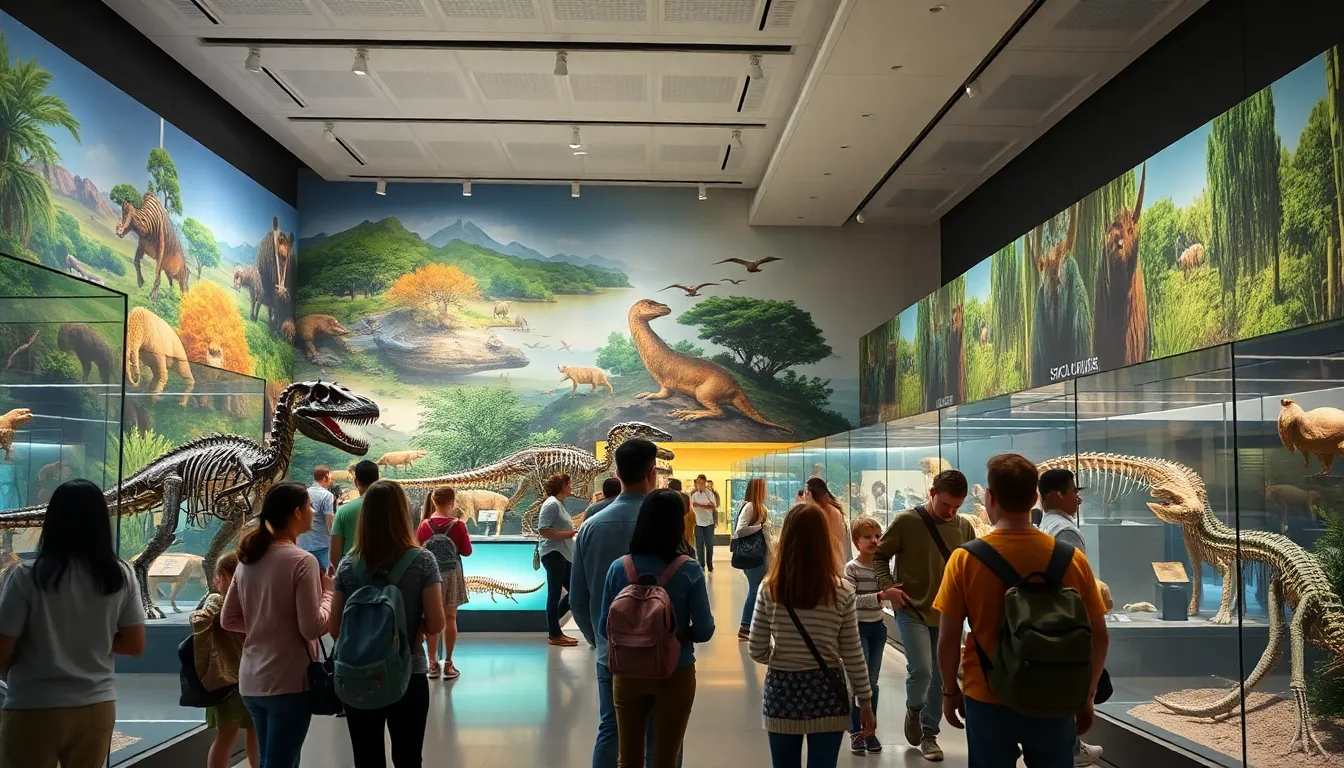When was the last time you wandered through a museum and felt your mind buzzing with curiosity? Life science museums have come a long way since their inception, transforming into immersive learning experiences that captivate audiences of all ages. From caveman-like collections of fossils to state-of-the-art interactive exhibits, the evolution of these institutions is as fascinating as the life forms they showcase. Get ready for a journey that blends history, education, and technology in a way that makes you want to plan your next museum trip faster than you can say ‘T-Rex’.
Table of Contents
ToggleHistorical Development of Life Science Museums

Life science museums didn’t pop up overnight. Their evolution paints a colorful picture of humanity’s growing fascination with biology, nature, and everything in between. It all began in the 18th century, when natural history museums started to play a crucial role in shaping public knowledge. People marveled at taxidermied animals and dinosaur bones, creatures they might never see in person. Museums like London’s British Museum laid the groundwork, setting a precedent for future institutions.
As the field of science progressed, so did the mission of life science museums. The late 19th century saw the rise of educational philosophies that championed field trips for students. This shift meant museums began to focus on not just showcasing items but also telling the stories behind them. Each exhibit turned into an opportunity to educate and engage the public, allowing visitors to learn about the complexities of ecosystems and the importance of conservation.
The Role of Exhibits in Education
Exhibits might seem like simple displays at first glance, but they are anything but ordinary. They are gateways to knowledge. Each installation tells a story, aiming to spark interest and encourage critical thinking. Life science museums craft their exhibits around key themes such as biodiversity, evolution, and environmental sustainability, all while tailoring their segments to cater to various age groups.
For instance, a hands-on exhibit about ecosystems can encourage children to engage with nature in ways textbooks can’t. These experiences plant seeds of curiosity, igniting future scientists. Also, by incorporating multi-sensory elements, like sounds of chirping birds or the scent of certain plants, museums pull visitors in with an immersive experience that keeps them coming back for more.
Technological Advancements in Museums
Technology has become a game changer in the life science museum landscape. With innovations proliferating at lightning speed, museums have adapted, utilizing tools that enhance the visitor experience.
The Impact of Digital Media and Online Platforms
From virtual reality tours to interactive screens, the digital realm now plays a crucial role in exhibitions. Imagine stepping into a virtual forest where you can interact with various species without leaving your home. This is not science fiction, it’s happening today. Digital media has made it possible for museums to extend their reach beyond brick-and-mortar walls. Online platforms allow institutions to offer remote access to their archives, engaging a global audience eager to learn.
Also, social media is changing how museums communicate with the public. Engaging posts or live discussions with scientists get people buzzed up about topics they didn’t even know they were interested in. In essence, technology amplifies the educational mission of life science museums, making them accessible at any hour.
Case Studies: Successful Life Science Museum Initiatives
To illustrate the evolution of life science museums, let’s look at a few standout examples that have redefined what a museum can be.
Take the California Academy of Sciences, for instance. Its innovative design not only draws visitors in but utilizes sustainability as part of its core message. With a living roof and an aquarium, it demonstrates eco-friendly practices while educating the public about biodiversity. The unique combination of architecture and science creates an unforgettable experience for visitors.
Another prime example is Boston’s Museum of Science, known for its dynamic exhibits. Their annual traveling exhibitions highlight urgent topics, bringing attention to issues like climate change. Tackling complex subjects through interactive displays fosters deeper understanding and encourages community discussion.
These museums tackle educational challenges head-on, effectively becoming hubs of knowledge and innovation.
Challenges Facing Life Science Museums Today
Even though the tremendous progress, life science museums face several challenges that hinder their goals. Budget constraints are one of the most significant hurdles, especially with the economic fluctuations impacting funding sources. Many institutions rely on grants, donations, and ticket sales, which can create instability.
Also, staying current with scientific advancements while curating exhibits can be daunting. New discoveries happen continuously, meaning that museums must regularly update their offerings to provide accurate, relevant information. This requirement can strain resources and limit the effectiveness of certain exhibits.
Last but not least, attracting diverse audiences remains a crucial issue. Museums must find innovative ways to engage underrepresented communities, ensuring that everyone feels welcome and included in the world of life sciences.
Future Trends in Life Science Museums
Looking ahead, a few trends are shaping the future of life science museums. One such trend is the increasing focus on sustainability and environmental education. As the climate crisis looms larger, museums are uniquely positioned to raise awareness and promote action.
Collaboration with local organizations is also emerging as a key component. Museums that partner with schools, universities, and conservation groups can create more impactful programs that extend learning beyond their walls.
Experiential learning will continue to rise. As visitors seek hands-on, dynamic experiences, museums will need to innovate how they present information. From live demonstrations to citizen science projects, engaging the public in active learning keeps them informed and motivated.
In short, the next decade will undoubtedly bring both challenges and opportunities that could redefine life science museums once again.
